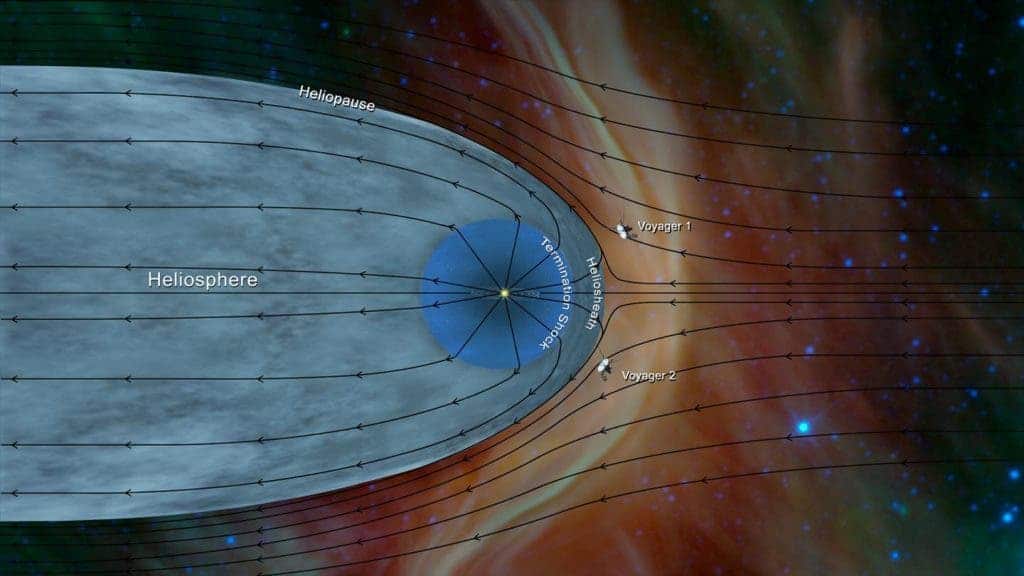More than four decades after it began its epic journey, the Voyager 2 spacecraft has now officially reached interstellar space. In a new study, scientists have confirmed that the spacecraft is now outside the bubble-shaped region created by the sun’s wind, known as the heliosphere. This is the second interstellar spacecraft to reach so far from home, joining Voyager 1 which exited the solar system in 2012.

The sun constantly gushes out a flow of charged particles, known as plasma, known as solar wind. As this solar wind radially sweeps out into space, it creates a bubble filled with radiation and magnetic fields that trail all the way back to the sun. Ultimately, this solar blanket has a crucial impact on the formation and evolution of planetary systems by acting as a huge shield that blocks galactic radiation.
But now Voyager 2 has crossed this barrier that separates the solar system from the rest of the galaxy. Scientists are sure of this since the plasma wave instrument onboard the spacecraft has measured a significant increase in plasma density, up from the hot, low-density plasma characteristic of the solar wind. This plasma density jump was also recorded during Voyager 1’s exit out of the solar system.
According to Don Gurnett, the principal investigator on the plasma wave instrument aboard both Voyager 2 and Voyager 1, the spacecraft entered the interstellar medium at 119.7 astronomical units (AU), or more than 11 billion miles (17.7 billion km) from the sun. Voyager 2 is only the second spacecraft to travel beyond the confines of the heliosphere. The craft was launched slightly ahead of its twin Voyager 1 in 1977.
“In a historical sense, the old idea that the solar wind will just be gradually whittled away as you go further into interstellar space is simply not true,” says Don Gurnett, corresponding author on the study, published in the journal Nature Astronomy.
“We show with Voyager 2–and previously with Voyager 1–that there’s a distinct boundary out there. It’s just astonishing how fluids, including plasmas, form boundaries.”
Voyager 1 crossed into interstellar space at about 122.6 AU, but at a different point in the solar system since it had different goals and trajectories through space. This implies that the heliosphere is symmetric.
“There’s almost a spherical front to this,” adds Gurnett. “It’s like a blunt bullet.”
However, damage to the plasma instrument meant that complete data on the transition could not be gathered.
The new study also provides new insight into the thickness of the heliosheath — the region where solar wind piles up against the approaching interstellar wind. Gurnett likens it to the effect of a snowplow on a city street during winter.
According to data from both Voyager spacecraft, the heliosheath has varying thickness. For instance, Voyager 1 had to travel 10 AU farther than Voyager 2 in order to reach the heliopause — the boundary point where the solar wind and interstellar wind are in balance. This is considered the crossing point to interstellar space.
Voyager 1 is still up and about, and its instruments are recording that the plasma density is rising. The spacecraft is so far away that it now takes 19 hours for data to be transmitted to Earth. And as the spacecraft ventures even farther into interstellar space, communications are expected to suffer.
According to astronomers, both Voyagers are on an orbit around the galaxy for five billion years or longer. They will likely not run into anything and could very well outlast planet Earth. “They might look a little worn by then,” Gurnett joked.









